It has to be emphasized that while the current state borders of West European countries are very similar to those established either till 1815 or till 1885, and while Central and East European borders are almost identical with those established from 1919 to 1924, the external borders of successor states of the ex-Yugoslavia are identical with those established by the Communist Titoist Government in 1945 as inner borders within socialist Yugoslavia.[i]
The Balkan, South Slavic, and Yugoslav nationalisms have deep historic roots. They could be traced back to the time of the Baroque epoch, followed by the development of the national ideologies in the era of the Enlightenment and the time of Romanticism, and finally coming to us in a very slightly modified version of the original ideological-political postulates. Contemporary irredentism of the Yugoslav nations, which can be also named “Piedmontism” according to the archetype of the Italian unification from 1859 to 1861/1866, is essentially based on the historical development of the national ideologies of the Yugoslavs. An adopted policy of irredentism led unavoidably the Yugoslav peoples to the bloody ethnic conflicts followed by ethnic persecutions and cleansing during the last Yugoslav civil war, which started in 1991 and still is not over on the ground of the Republic of North Macedonia with very promising possibility to start soon in NATO’s Montenegro where the ethnic Serbs and their national church have been up to the end of 2020 systematically persecuted by M. Đukanović’s pro-Western oppressive regime.[ii] A part of the irredentist approach was a regular non-recognition of the identity of the neighboring nations.[iii]
It is necessary to mention in the next paragraphs the most representative cases of such approach – the cases which influenced the minds of the Yugoslav politicians and national ideologists since the modern time up today.
The Croatian geopolitical ambitions in Europe
Pavao Ritter Vitezović (1652−1713), an aristocrat of German origin of the Dalmatian city of Senj, was the first South Slavic national ideologist who extended the Croatian ethnic name not only to the Balkan Slavs but rather to all Slavs. Using several different medieval historical sources upon Slavic settlement on the Balkan Peninsula and many of the South Slavic literal and historical works that recorded a popular tradition about the Balkan-Illyrian origin of all Slavic peoples, P. R. Vitezović concluded that legendary Slavic progenitors, brothers Czech, Lech, and Rus, should be understood as of the Croat ethnolinguistic origin. By identifying those three brothers as ethnolinguistic Croats, P. R. Vitezović concluded that, in fact, the entire Slavic population in the world is descended from the Balkan Croats.
During the last stage of the Great Vienna War (1683−1699), between the Christian Alliance against the Ottomans, when the struggle between Venice and the Habsburgs for a division of the South Slavic lands emerged, P. R. Vitezović wrote a memorandum to the Habsburg Emperor in order to refute any Venetian claim on the territory of “Croatian historical“ lands. His work about limites totius Croatiae (“the borders of whole Croatia”) demonstrated, actually, the borders of a Greater Croatia, which was divided into two parts: 1) Croatia Septemtrionalis (North Croatia), north of the Danube River composed by Bohemia, Moravia, Lusatia, Hungary, Poland, Lithuania, and Russia; and 2) Croatia Meridionalis, that was the Balkan Peninsula with Croatia, Slavonia, Dalmatia, Slovenia, Bosnia-Herzegovina, Albania, Epirus, Thessaly, Serbia, Bulgaria, Macedonia, and Thrace. The Balkan Croatia was further subdivided into: 1) Croatia Alba (White Croatia); and 2) Croatia Rubea (Red Croatia). Transdanubian Croatia was subdivided into Sarmatia (Poland, Lithuania, and Russia); and Venedia (Bohemia, Moravia, and Lusatia). Shortly, the 17th-century Croatian usage of the terms “Illyrian” and “Croat” as the synonyms P. R. Vitezović simply extended to all Slavs understanding them as the peoples of the Croatian ethnolinguistic origin. In other words, each Slavic nation was the only specium of the Croatian gens.
The ideology of Pan-Croatianism created by Pavao Ritter Vitezović, who developed the ancient theory upon the derivation of all Slavs from the Balkan Illyrians, but unreasonably Croatized the later, was a historical construction and a political program as a protest against long-time fragmentation of „Croatian historical“ and ethnic territories, but it was at the same time and the politics against territorial pretensions on the Croatian historical-ethnic space by the Republic of St. Marco. Finally, P. R. Vitezović attempted by his writings to obtain the Habsburg political-military support for establishing the united or Greater Croatia, i.e. Croatia rediviva. P. R. Vitezović’s arguments were both historical and ethnolinguistic that helped him to appropriate a vast territory of Europe, from the Adriatic and the Black Sea to the Ural and the Baltic Sea, to Croatdom.
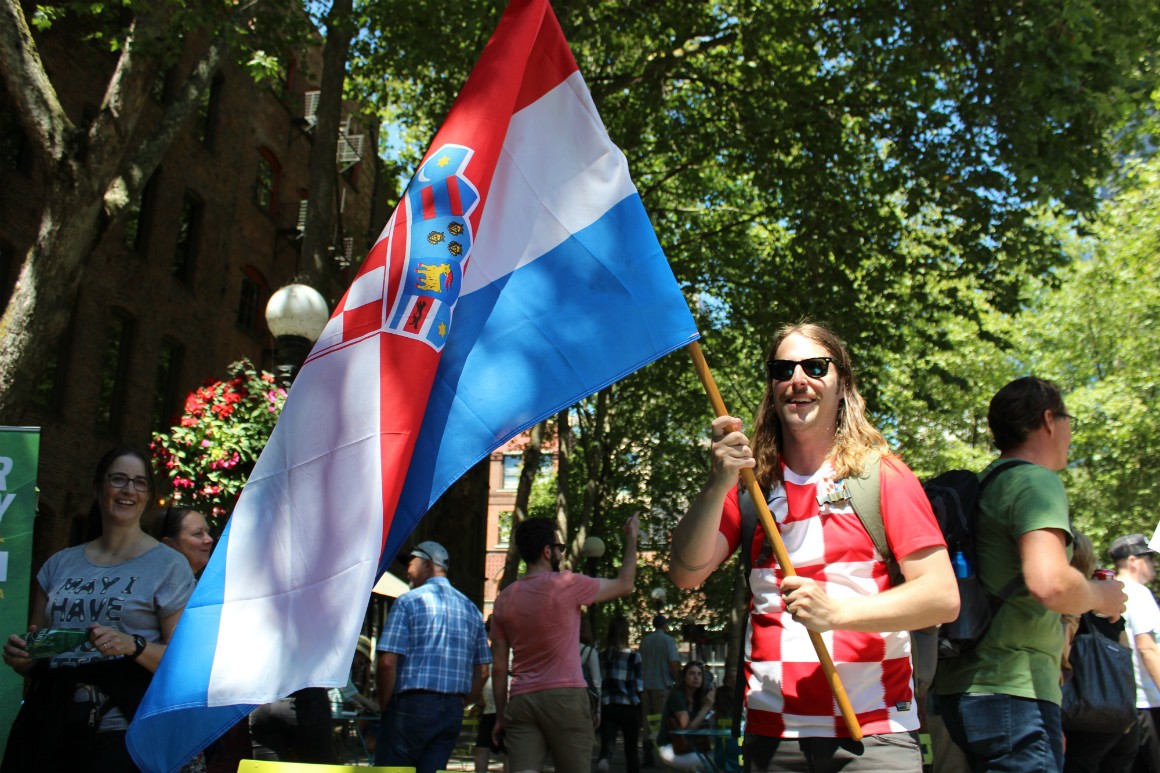 P. R. Vitezović even considered the whole territory of Polish-Lithuanian Commonwealth as a Croato-Slavic land, primarily due to the fact that his knowledge about Poland and Lithuania primarily came from the writings of pro-Polish and pro-Slavic authors who saw Lithuania as Slavic territory, which was in the great extend Polonized, i.e. became of the Slavic feature, through the Polish language and culture. In addition, P. R. Vitezović’s apprehension of Lithuania as Croato-Slavic land came from the facts that Slavic languages, among the others, were languages of official correspondence within the Grand Duchy of Lithuania, and what is more important, that a majority of Lithuania’s population at that time (70%) was of the Slavic origin. Subsequently, according to his Croatocentric doctrine, the “Slavic” Grand Duchy of Lithuania was actually populated by ethnolinguistic Croats and belonged to united and Greater Croatia rediviva.[iv]
P. R. Vitezović even considered the whole territory of Polish-Lithuanian Commonwealth as a Croato-Slavic land, primarily due to the fact that his knowledge about Poland and Lithuania primarily came from the writings of pro-Polish and pro-Slavic authors who saw Lithuania as Slavic territory, which was in the great extend Polonized, i.e. became of the Slavic feature, through the Polish language and culture. In addition, P. R. Vitezović’s apprehension of Lithuania as Croato-Slavic land came from the facts that Slavic languages, among the others, were languages of official correspondence within the Grand Duchy of Lithuania, and what is more important, that a majority of Lithuania’s population at that time (70%) was of the Slavic origin. Subsequently, according to his Croatocentric doctrine, the “Slavic” Grand Duchy of Lithuania was actually populated by ethnolinguistic Croats and belonged to united and Greater Croatia rediviva.[iv]
The Serbian ethnographic-historical pretensions in South-East Europe
The Serbian Sremski Karlovci Metropolitan Stevan Stratimirović (1757−1836) created an idea of autonomous tributary religion-language-based Orthodox Shtokavian Slavonic–Serbian state in 1804. The state should be governed by the Russian Grand Duke, be under the Russian political-military protectorate, as well as be only nominally included in the Ottoman Empire, and finally to pay annual fixed tribute to the Ottoman Sultan as its formal suzerain. S. Stratimirović’s concept of politically united religion-language-based Serbian nation within the borders of a single national state anticipated unification of the historical and ethnographic Serbian territories from both the Ottoman Empire and the Habsburg Monarchy.
Nevertheless, his notion of the national identity of the Serbs was rather innovative at that time. In other words, he created an idea of the national identity of the Serbs by combining the language criteria and the religious principle of identification. As a result, according to S. Stratimirović’s opinion, the Serbian nation was represented by the entire Christian Orthodox South Slavic population who spoke the Shtokavian dialect.[v] Subsequently, all Balkan territories settled by the Orthodox-Shtokavian South Slavs had to be included in unified Serbia. S. Stratimirović’s idea was expressed in the Memorandum submitted to the Russian Emperor Alexander I Romanov. The Memorandum gave a great contribution to the history of the Serbian premodern political doctrines and ideologies as one of the most important national state projects. This project was created during the turning point moment in the whole Serbian history. It was the time of the First Serbian Uprising (1804−1813) against the Ottoman lordship. There were indeed many plans during the uprising connected with the question of the Serbian liberation and national political unification but the Memorandum was one of the most important of them.[vi] In addition, S. Stratimirović’s new idea on the national identity of the Serbs also has a great impact on later reformulations of the principles of the national identity and consequently on the remapping of South-East Europe by the creation of a united national state of the Serbs that was based primarily on the language but not too much on the religion.
The Croat Illyrian trap of Yugoslavia
The movement of Croatian national revival from the first half of the 19th century that is usually called the „Illyrian Movement” had a Pan-Croatian form of national identification and the creation of a national state of the Croats. According to the ideology of the „Illyrian Movement“, all South Slavs (the Slovenes, Serbs, Croats, Bulgarians, Slavs from Bosnia-Herzegovina, Macedonia, and Montenegro) belonged to the Croatian nation (a model created by Pavao Ritter Vitezović). Their national languages were considered only as of the dialects of the Croatian language and consequently, their territories were accounted into the Croatian national soil and understood as the provinces of the united Croatian national state[vii] which was hidden firstly under the name of the Illyrian Kingdom and later of Yugoslavia.
Based on such ideology, a Croatian historian Josip Parlaš printed in Zagreb in 1862 a Historical Map of Entire Old Kingdom of Croatia. According to the map, Croatia, Dalmatia, Slavonia, Srem, Montenegro, all Adriatic islands, and Bosnia-Herzegovina belonged to the “historic” Kingdom of Croatia. The author of the map insinuated that all of these “historical” lands of Croatia should be an integral part of a new independent state of Croatia. Nevertheless, he was followed by another Croatian historian, N. Z. Bjelovučić, who printed in 1933 a map of Ethnographic Borders of Croats in the Kingdom of Yugoslavia. N. Z. Bjelovučić included within these borders whole Bosnia-Herzegovina, Croatia, Slavonia, Dalmatia, Istria, the Montenegrin littoral, Srem, whole Baranja, and West Bachka.[viii] Finally, contemporary Croatian historiography follows a similar way of thinking regarding territorial dispersion of the Croatian nation and ethnohistorical borders of united Croatia.[ix] Probably, the most extreme case is the book History of Croatia by Dragutin Pavličević where is written that the Serbs were not living in Bosnia before the Turks occupied this province in the mid-15th century,[x] which is a pure lie.
Albanian political “methodology”
Albanian nationhood was understood in the 19th-century romanticist notion of nationality, i.e., the Albanians were the Balkan people whose mother tongue was Albanian regardless of the confessional division of Albanian people into three denominations (Islamic, Roman Catholic and Eastern Orthodox).[xi] Such a “methodology” of national identification was implemented as well as by the Communist regime in Albania from 1967 to 1990 under the motto: “Our religion is Albanianism”.[xii]
Nevertheless, within the borders of North Albania’s tribes, especially among the Mirditi, the Roman Catholic Church was and is traditionally very influential. In other words, the Roman Catholic Church became the principal vigilante of the language, cultural heritage, and national identity of the Albanians in North Albania.[xiii]
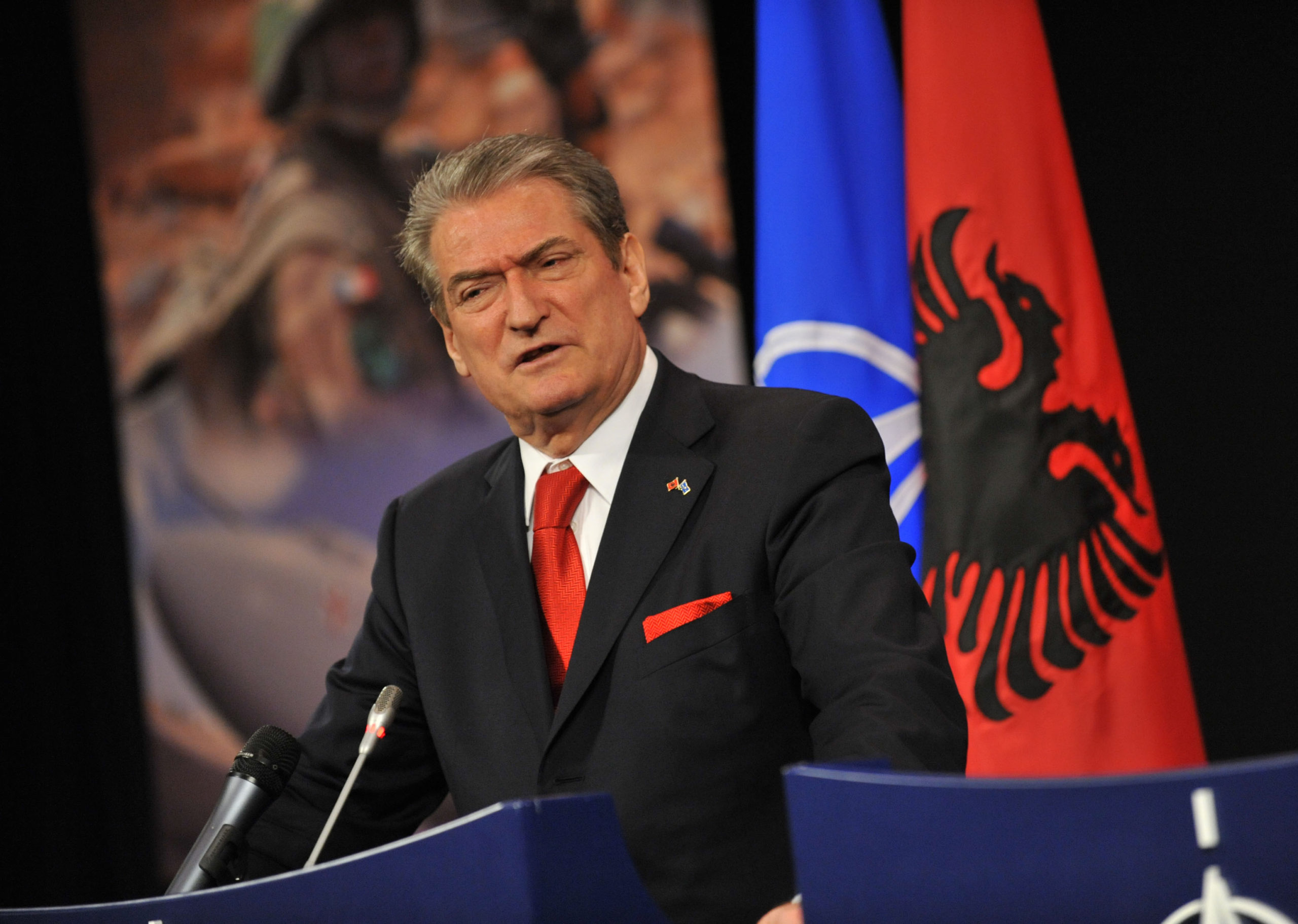
The expression of common sense of the Albanian nationhood was uttered by the Albanian political leadership in the years of the Balkan Wars (1912−1913) in the following slogan: “Neve Shqiptar nuk jemi Greke, Sllav, or Teerk, neve jemi Shqiptar” (“We Albanians are not Greeks, Slavs, or Turks, we are Albanians”). An Albanian political “methodology” before and during the Balkan Wars was applied to prepare unification of all “ethnically Albanian territories” in the Balkans into a Greater (unified) Albania – a single national state of all Albanians, i.e., within alleged Albanian historical and ethnic borders demanded by the Albanian First League of Prizren in the years of its existence (1878−1881).
Essentially similar national-state concepts were also included in political programs of the Albanian Peja League, from 1899, the Greater Albanian Kosovo Committee, from 1920, and the Albanian Second Prizren League, from 1943. Shortly, preservation of the traditional, common law and local community as the organizational basis of the national movement followed by the demand for the unification of all territories populated by the Albanians became the Albanian primary national interest from 1878 onward: for instance, both Kosovo-Metochia’s and Macedonian Albanians demanded in March-May 1981 during the mass anti-Yugoslav demonstrations a separation of Kosovo-Metochia’s autonomous province and West Macedonia from the SFR of Yugoslavia and their inclusion into a Greater Albania with Tirana as its capital as it was during WWII (1941−1944).
To be continued
Reposts are welcomed with the reference to ORIENTAL REVIEW.
[i] The Communist Party of Yugoslavia, and especially her Secretary-General Slovenian-Croat Roman-Catholic Josip Broz Tito (1892−1980), had a very strong an anti-Serb attitude which was implemented into the post-war Yugoslav practice. The party was established and functioning as anti-Serb political organization which was favoring all other Yugoslav nations and national minorities, but especially the Slovenes, Croats, and Albanians. See [Сотировић Б. В., “Антисрпски карактер Комунистичке партије Југославије”, Serbian Studies Research, Vol. 3, No. 1, 2012, pp. 73−88; Сотировић Б, В., На одру титографије (збирка чланака), Виљнус: Штампарија Литванског едуколошког универзитета „Едукологија“, 2012]. For that reason, the internal administrative border arrangement between the Yugoslav republics was set up at Serbia’s and Serbian expense after WWII.
[ii] Until 1923, the majority of the population of geographic Macedonia was of the Slavic origin. However, because of the influx of the Greek settlers from Asia Minor after the Greco-Turkish war (c. 1,500,000 Greek refugees) followed by the emigration of c. 350,000 Muslims under the Treaty of Lausanne (July 24th, 1923), the ethnic composition of Aegean Macedonia changed tremendously at the Slavic expense. The Greek Macedonia (Aegean Macedonia) became after 1923 definitely Hellenized province. The essence of “New Macedonian Question” is the question of Albanian destiny in the Republic of North Macedonia, i.e. the question of Macedonia’s civil war between the ethnic Albanians and the ethnic Slavs. See [Pettifer J., The New Macedonian Question, New York: Palgrave, 2001].
[iii] For instance, two out of four neighbors of the Republic of North Macedonia – the Greeks and Bulgarians, do not recognize a separate “Macedonian” ethnolinguistic identity.
[iv] Vitezović P. R., Croatia rediviva: Regnante Leopoldo Magno Caesare, Zagreb, 1700; Vitezović P. R., Offuciae Ioannis Lucii de Regno Dalmatiae et Croatiae Refutate, Zagreb, 1706; Vitezović P. R., Oživjela Hrvatska, Zagreb, 1997; Vitezović P. R., Mappa Generalis Regni Croatiae Totius. Limitibus suis Antiquis, videlicet, a Ludovici, Regis Hungariae, Diplomatibus, comprobatis, determinati (1:550 000, drawing in color, 69,4 x 46,4 cm.), Hrvatski državni arhiv, Kartografska zbirka (Croatian State Archives, Cartographic Collection), D I. Zagreb, 1699; Ritter P., Stematographia, sive Armorum Illyricorum delineatio, descriptio et restitutio, Wien, 1701; Ritter P., Anagrammaton, Sive Lauras auxiliatoribus Ungariae liber secundus, Wien, 1689; Ritter P. E., Indigetes Illyricani sive Vitae Sanctorum Illyrici, Zagreb, 1706; Ritter P. E., Responsio ad postulata comiti Marsiglio in Count Marsigli’s collection, manuscript volume 103, entitled Documenta rerum Croaticarum et Transylvanicarum in Commisione limitanea collecta, fol. 27r-34r, Biblioteca Universitaria di Bologna, Bologna, 1699; Ritter P. E., Kronika, Aliti szpomen szvieta vikov, Zagreb, 1696.
[v] Ex-Serbo-Croat language was officially divided into three dialects: Shtokavian, Kajkavian, and Chakavian. Today, the Shtokavian dialect is shared between the Serbs, Croats, Bosniaks, and Montenegrins. The Kajkavian is shared by the Croats and Slovenes, while the Chakavian is exclusively the Croat one. Regarding the history of the Serbian literal language see [Милановић А., Кратка историја српског књижевног језика, Београд: Завод за уџбенике и наставна средства, 2004]. Regarding the history of the Croatian literal language see [Moguš M., Povijest Hrvatskoga književnoga jezika, Zagreb: Nakladni zavod Globus, 1993].
[vi] Димитријевић С. Т., Стевана Стратимировића, Митрополита Карловачког План за ослобођење српског народа, Београд, 1926; Руварац Д., Географске белешке о Турској Митрополита Стратимировића из године 1803 и 1804, Београд, 1903; Слијепчевић Ђ. М., Стеван Стратимировић митрополит Карловачки као поглавар цркве, просветни и национално-политички радник, Београд, 1936; Стратимировић С., “Објашњење постанка и узроци устанка српских хришћана 1804”, Српски књижевни гласник, № 18, Београд, 1907; Sotirović B. V., “The Memorandum (1804) by the Karlovci Metropolitan Stevan Stratimirović”, Serbian Studies: Journal of the North American Society for Serbian Studies, Vol. 24, № 1−2, 2010 (2012), pp. 27−48.
[vii] Derkos I., Genius patriae super dormientibus suis filiis, Zagreb, 1832; Drašković J., Disertatia iliti razgovor, darovan gospodi poklisarom zakonskim i budućem zakonotvorcem kraljevinah naših, Karlovac, 1832; Starčević A., Politički spisi, Zagreb, 1971.
[viii] Both maps are printed as appendixes in the book [Крестић Ђ. В., Геноцидом до Велике Хрватске, Јагодина: Гамбит, 2002].
[ix] For instance: Perić I., Povijest Hrvata, Zagreb, 1997; Macan T., Povijest hrvatskoga naroda, Zagreb, 1999; Bilandžić D., Hrvatska moderna povijest, Zagreb, 1999; Tuđman F., Hrvatska u monarhističkoj Jugoslaviji, I, II, Zagreb, 1993; Tuđman F., Povijesna sudba naroda, Zagreb, 1996; Marković M., Descriptio Croatie, Zagreb, 1993; Sekulić A., Bački Hrvati, Zagreb, 1991; Sekulić A., Hrvatski srijemski mjestopisi, Zagreb, 1997.
[x] Pavličević D., Povijest Hrvatske. Drugo, izmijenjeno i prošireno izdanje sa 16 povijesnih karata u boji, Zagreb, 2000, p. 138.
[xi] However, Albano-Syrian scholar, Muhammad Mūfākū al-Arnaut claims that Islamic faith preserved Albanian nationality [Mūfākū al-Arnaut, “Islam and nationalism in the Balkans – the role of religion in the shaping of peoples” [original in Syrian], Yarmuk University, published in Syria, in Dirãsat Tā’rīkhiyya, September–December, №s 47 and 48, 1993, pp. 121−140]. The same opinion is shared by the Yugoslav scholar [Balić S., “Eastern Europe, the Islamic dimension”, Journal of the Institute of Muslim Minority Affairs, Vol. 1, № 1, 1979, p. 29]. Nevertheless, it has to be noticed that the linguistic nationalism is even today very strong in Europe including and West Europeans as well. For instance: “If you cannot speak Welsh, you carry the mark of the Englishman with you every day. That is the unpleasant truth” [The Guardian, November 12th, 1990, p. 1]; or: “It is the task of all those who live in Catalonia to preserve its personality and strengthen its language and culture” [Pujol J., Construir Catalunya, Barcelona: Pórtic, 1980, p. 36].
[xii] Turnock D., Eastern Europe: An Economic and Political Geography, London: Routledge, 1989, p. 29.
[xiii] Draškić S., “Nadmetanje Austro-Ugarske i Italije koncem XIX i početkom XX veka u Albaniji”, Marksistička misao, Vol. 3, № 2, 1986, pp. 129−132. See also [Starova G., “The Religion of the Albanians in the Balkan European Context”, Balkan Forum, Vol. 1, № 4, 1993, pp. 201–204]. The Roman Catholicism and the Latin alphabet play also the pivotal role in national identification of the Croats whose literal language is the same as that of the Serbs as it is „borrowed“ from the Serbs by the Croat „Illyrians“ [Костић М. Л., Крађа српског језика. Културно-историјска студија, Нови Сад: Добрица књига, 1999].
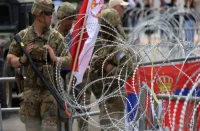
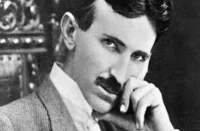
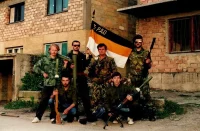











Comments